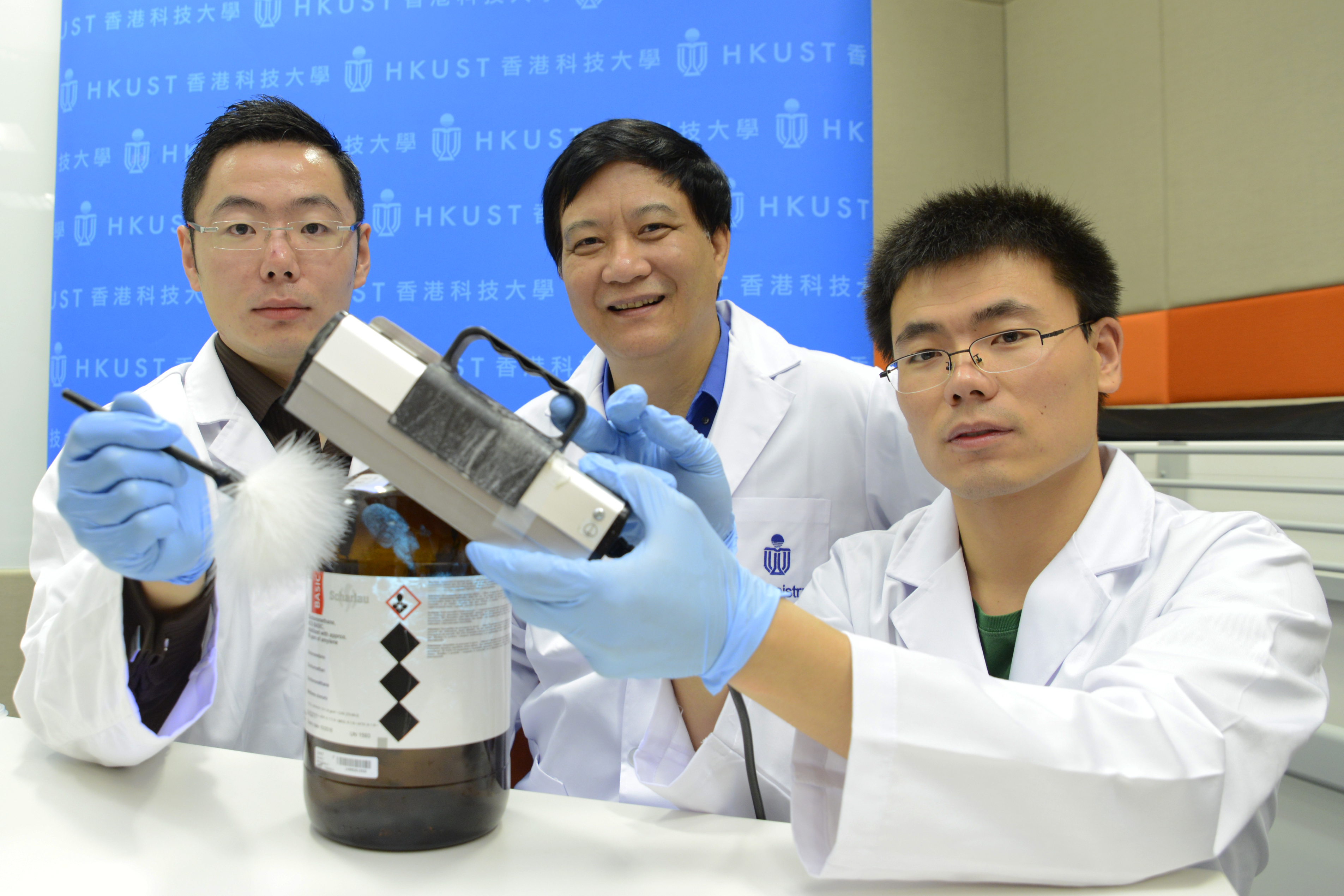|
Human fingerprints are unique. The recovery and sampling of fingerprints from a crime scene is very crucial for crime fighters to collect solid evidence for further investigation. At HKUST, a research team led by Prof Benzhong Tang, Stephen Kam-chuen Cheong Professor of Science, Chair Professor of Chemistry and a member of the Chinese Academy of Sciences, has discovered new Aggregation-Induced Emission (AIE) materials which could be used for applications in forensic science and bacterial imaging.
As a common practice, police and forensic scientists apply carbon powder in the crime scene to obtain fingerprints. The complicated and long procedure may take days, and precious time needed to track down the perpetrators would be lost. In addition, fidelity of the print may be compromised while powders were transferred onto tapes.
The new AIE materials can produce fingerprints of much better quality as compared to carbon powder, saving 90 percent of the time in evidence collection, as it does not involve a transfer. “The Police will only have to take a picture of a fingerprint, which will turn fluorescent when stained with the AIE material, then send the image through a smart device for instant comparison with their database,” said Prof Tang. The new AIE material also makes collection of fingerprints on bended, round and uneven surfaces easy, a previously difficult task. The HKUST research team has already introduced these potential applications to the Hong Kong police force.
The new AIE material also reveals bacteria with greater effectiveness and accuracy when used as a bacteria detecting agent, compared to the widely-used propidium iodine. The fluorescent AIE material enters cell membranes and simply turns bacteria cells shiny. Prof Tang added, “The non-toxic AIE substance merges with the bacterial structure and greatly enhances the fluorescent period of the bacteria, which makes long-term tracking possible. There would be many meaningful applications in environmental monitoring, food processing, medical hygiene and pharmaceutical quality control.”
|
|
 |
| Prof Benzhong Tang and his research team has discovered new Aggregation-Induced Emission (AIE) materials which could be used for applications in forensic science and bacterial imaging. |
|
 |
|
|
|